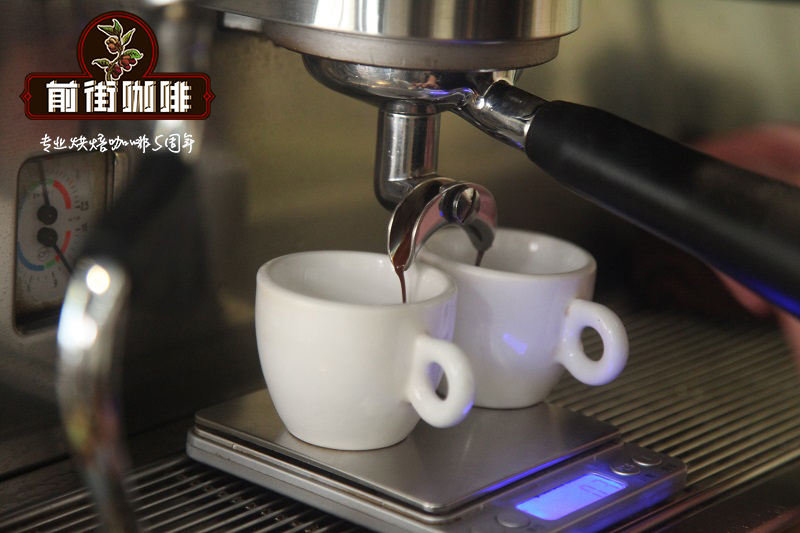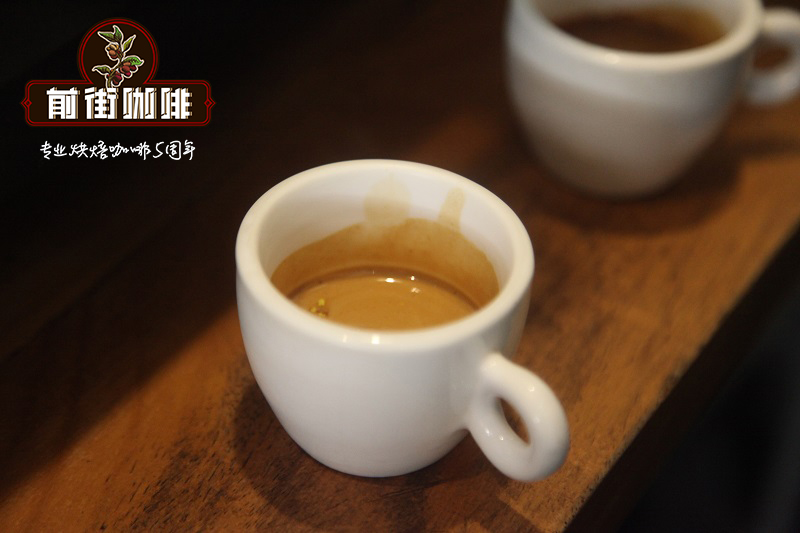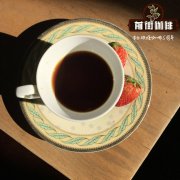Espresso | how much does the change of powder content affect the extraction of espresso?

What is the effect of the depth of the powder layer when you increase the dose to make more espresso?
The amount of powder is one of the basic variables of any enrichment scheme, but it may also be the most often overlooked one. Most of us may adjust the size or output of grinding regularly, but always use the same dose.
To be fair, there is usually a good reason for this-it makes sense for cafes to choose a fixed dose in order to keep the concentration and size of the drink the same. Therefore, at Barista Hustle, we recommend that you choose a fixed dose that suits your cafe and equipment and stick to it.
However, the dose you choose will certainly affect the flavor and extraction, even if you keep other parameters (such as brewing ratio, brewing time, or total extraction%) the same.
Select a dose
In a cafe, the most important thing is to consider how much wine you want to drink. To understand the importance of this, read this classic introduction from archives. That article also explains why you should choose the amount of powder that suits your handle-or, better yet, the one that suits the amount of powder you want to use.
In this article, we will dig deeper and study in detail the knock-on effect of this selection and how it affects flavor and extraction.
There are three main factors that affect the dose: the vertical uniformity of the extract, the grinding size, and the risk of the channel. If you are trying to optimize the dose of taste, there is a major trade-off between these three factors.
Vertical uniformity of extraction
When you are brewing espresso, fresh water constantly enters the top of the powder bowl and passes through the coffee bed, taking away the coffee solids in the process. When the water reaches the bottom of the powder bowl, it is already full of dissolved matter, greatly reducing its extraction ability.
This means that the coffee at the top of the powder bowl is extracted much faster than the coffee at the bottom. The greater the distance between the top and bottom, the more places coffee and water have to pass through, and the greater the difference in extraction.
A more uniform extract usually tastes better and allows you to get the same strength with less coffee. So reducing the dose has a positive effect on taste and your bottom line.
Grinding size and Darcy's Law
Changing the dose can also affect the speed at which water flows through the puck. The increased dose shows more flow resistance, which means that a thicker grinding size is needed to make up for it.
Darcy's law is an equation that describes flow in a porous medium, such as a coffee bed. To put it simply, this law states that the flow rate of liquid through the bed is proportional to the permeability of the bed and inversely proportional to the distance through which it flows. In other words, if you double the dose of water, thereby doubling the distance over which the water flows, you halve the flow rate.
In this case, the permeability is controlled by the degree of grinding-the finer the degree of grinding, the lower the permeability of the bed and the corresponding flow rate. This explains why a lower dose requires a finer grinding particle size in order to achieve a given injection time.
For espresso, in most cases, the finer the grinding, the better the effect. Espresso is extracted mainly through erosion of the surface of the particles (M Petracco, 2005)-water does not enter the center of the particles long enough to absorb the dissolved matter and spread out. This means that a high surface area (fine grinding and / or a large amount of "fine powder") is the key to extracting espresso.
Therefore, a lower dose allows you to grind more finely, which increases the extraction and is likely to improve the taste again. However, there is one major limiting factor: channels.
Most of the time, we have experienced the espresso channel effect. Some channels may be formed briefly, some too small to be seen, while others can penetrate the powder bowl, giving us typical "blond hair" or spray trained by baristas to gush from the handle. Whether you can see these channels or not, they are there-- there is no doubt that they make espresso taste worse-- by causing local overextraction, resulting in underextraction of the rest of the coffee bed.

Lower bed depth makes it easier for channels to form (M Petracco, 2005). This limits the extent to which the dose can be low before the channel actually begins to affect taste.
By the way, this is why some leveraged machines use narrower handles so that you can pull deeper at a given dose. The pressure of some leveraged machines can reach a peak of just over nine, which creates opportunities for the formation of channels, so deeper beds offset this.
The most effective pre-soaking can make the whole bed moist before the pressure increases, so a larger dose will benefit from a longer pre-soaking time. If you can adjust your pre-immersion time, try to set it so that the pre-immersion is over, just like the first drop begins to be collected under your powder bowl.
The top space (the space between the powder layer and the water distribution network) also affects here-in a traditional 9bar espresso machine, a larger top space may allow the grinding to saturate for longer before reaching full pressure, which slightly increases the amount of extraction. On the other hand, in the pre-soaking machine, the larger gap means that you need extra time to fill the head space before the pre-immersion is completed.
So, what kind of "ideal" dose is the most delicious?
Assuming you are not limited by the size of your drink, adjusting the dose may be a useful tool for adjusting the taste of your drink. Putting these factors together, we can see that while reducing the dose allows you to grind finer and make the extraction more uniform vertically, it increases the risk of the channel.
So the ideal dose is basically the lowest, and you can use the channel before it becomes a problem. This depends on many factors, such as your grinder, your technology, and brewing pressure. Because even small channels can have a great effect on taste, the only way to determine the ideal dose is through trial and error and a lot of tasting.
Important Notice :
前街咖啡 FrontStreet Coffee has moved to new addredd:
FrontStreet Coffee Address: 315,Donghua East Road,GuangZhou
Tel:020 38364473
- Prev

What is the taste description of Spanish latte? what are the differences between Spanish latte and latte?
Go into a coffee shop, order a Spanish latte, and you may get an espresso drink made from milk and condensed milk. However, if you go to other coffee shops around the world, you may need to order a cup of Vietnamese coffee or Bombon coffee to buy the same drink or something like that. So, to
- Next

What is Turkish coffee? Turkish coffee with a long history will not be popular again.
What is Turkish coffee? The term Turkish coffee does not refer to coffee from Turkey (the country does not grow coffee), but to the way the coffee is prepared. To prepare traditional Turkish coffee, the first step is to grind the ground beans and boil them in a pot (called cezve). Adding sugar is optional. Then pour the coffee into the cup and let the dregs settle. Coffee preparation
Related
- Beginners will see the "Coffee pull flower" guide!
- What is the difference between ice blog purified milk and ordinary milk coffee?
- Why is the Philippines the largest producer of crops in Liberia?
- For coffee extraction, should the fine powder be retained?
- How does extracted espresso fill pressed powder? How much strength does it take to press the powder?
- How to make jasmine cold extract coffee? Is the jasmine + latte good?
- Will this little toy really make the coffee taste better? How does Lily Drip affect coffee extraction?
- Will the action of slapping the filter cup also affect coffee extraction?
- What's the difference between powder-to-water ratio and powder-to-liquid ratio?
- What is the Ethiopian local species? What does it have to do with Heirloom native species?

